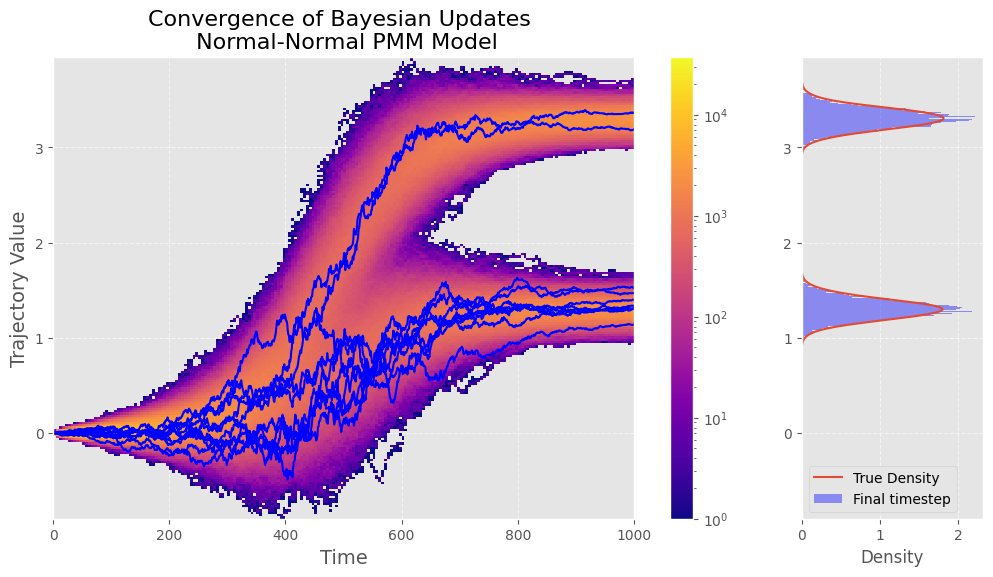This is a Plain English Papers summary of a research paper called Posterior Mean Matching: Generative Modeling through Online Bayesian Inference. If you like these kinds of analysis, you should subscribe to the AImodels.fyi newsletter or follow me on Twitter.
Overview
- Introduces Posterior Mean Matching (PMM), a novel method for training generative models
- Connects Bayesian inference and machine learning through pattern matching
- Presents applications in text generation and real-valued data modeling
- Demonstrates improved performance over existing generative methods
Plain English Explanation
Posterior Mean Matching works like a smart pattern-matching system. Think of it as teaching a computer to recognize and recreate patterns, similar to how an art student learns to paint by studying masterpieces. The system looks at real data, figures out the important patterns, and learns to generate new data that follows those same patterns.
Generative modeling through PMM offers a more direct approach than traditional methods. Instead of complex mathematical calculations, it focuses on matching patterns in data. This makes it both more efficient and easier to understand.
The method shines in two main areas: creating realistic text and handling numerical data. For text generation, it learns vocabulary patterns and writing styles. For numerical data, it captures statistical relationships and trends.
Key Findings
Posterior estimation through PMM shows several advantages:
- Matches or exceeds performance of current generative models
- Requires less computational power than traditional methods
- Works effectively with both text and numerical data
- Provides more stable training compared to existing approaches
Technical Explanation
The PMM framework builds on Bayesian inference principles but simplifies the implementation. Rather than calculating complex posterior distributions, it directly matches statistical patterns between generated and real data.
Diffusion models and PMM share some similarities, but PMM offers a more streamlined approach. The system uses two main components:
- A pattern matching mechanism
- A generation network
These components work together to create a feedback loop that continuously improves the quality of generated data.
Critical Analysis
While promising, PMM has some limitations:
- May struggle with highly complex data patterns
- Requires careful tuning of pattern matching parameters
- Limited testing on diverse data types
Probabilistic models could potentially enhance PMM's capabilities, but this remains unexplored.
Conclusion
PMM represents a significant step forward in generative modeling. By simplifying the approach to pattern matching, it makes powerful generative capabilities more accessible and efficient. The method shows particular promise for applications in text generation and data synthesis, though further research could expand its capabilities to more complex scenarios.
The balance of simplicity and effectiveness makes PMM a valuable addition to the generative modeling toolkit, with potential applications across various fields including content creation, data augmentation, and statistical modeling.
If you enjoyed this summary, consider subscribing to the AImodels.fyi newsletter or following me on Twitter for more AI and machine learning content.
